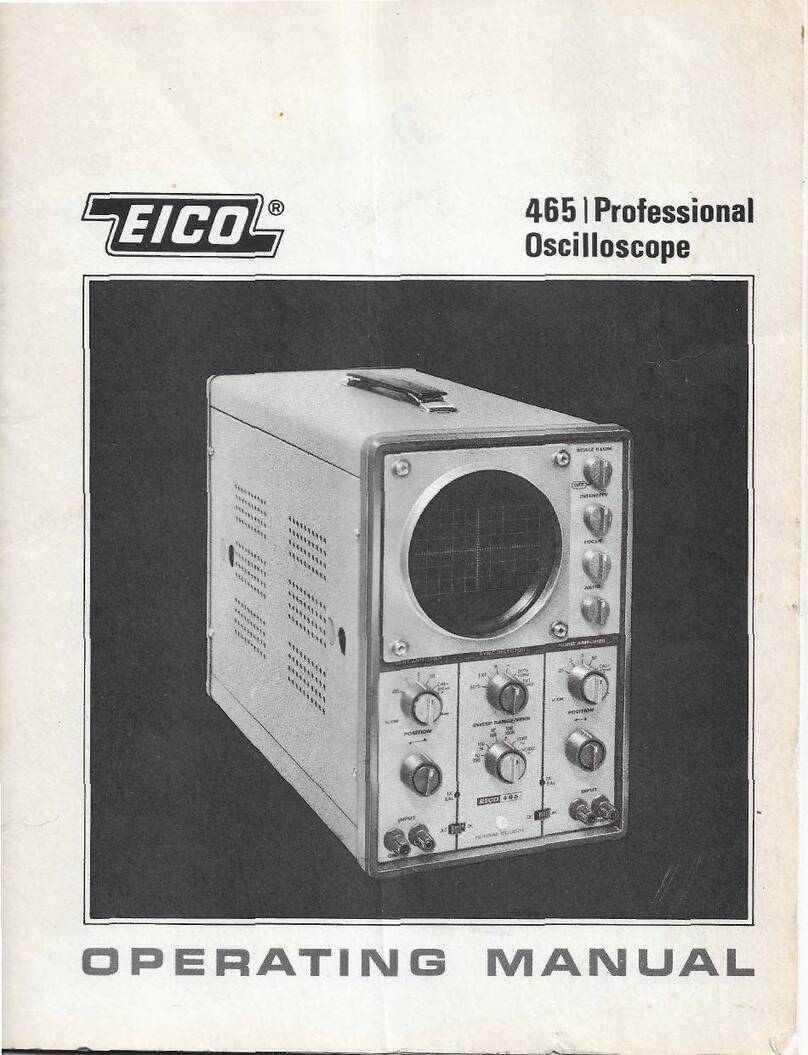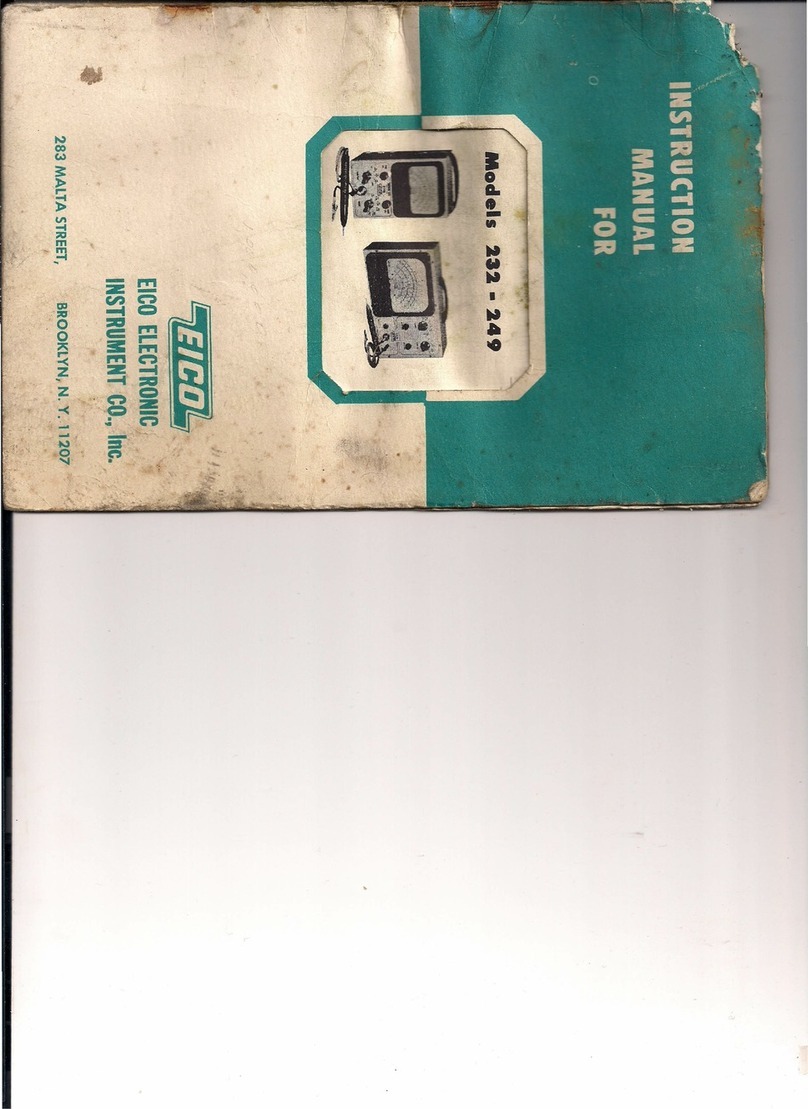source to be measured. On the 5V and 500V ranges, read the 0-5 AC-DC
scale (black); on the 10V, 100V, and 1000V ranges, read the 0-10 AC-DC
scale.
A-C VOLTAGE MEASUREMENT: Set the FUNCTION switch to "AC VOLTS" ,
the RANGE switch to the desired voltage range, and then use the ZERO ADJ.
potentiometer to bring the meter pointer to zero*. Clip the COMMON lead
to ground or the low side and touch the AC-OHMS probe to the high side of
the source to be measured. On the 5V range, read the special 5VAC scale
(red); on the 500V range, read the 0~5 AC-DC scale (black); on the IC'V,
100V, and 1000V ranges, read the 0-10 AC-DC scale.
RESISTANCE MEASUREMENT: Set the FUNCTION switch to "OHMS" and
the RANGE switch to the desired ohms range; connect the COMMON lead
to the AC-OHMS lead and then use the ZERO ADJ. tobring the meter pointer
to zero; separate the COMMON lead from the AC-OHMS lead and then use
the OHMS ADJ. potentiometer to set the meter pointer so that it reads exactly
ful l-scale. Clip theCOMMON lead to one terminal of the unknown resistance
and touch or connect the AC-OHMS probe to the other terminal. Read the
OHMS scale on the meter. On theRXl range, read the OHMS scale directly
in ohms; on RX10, RX1000, and RX10,000 ranges, multiply the scale reading
by 10, 1000, and 10,000 respectively and read in ohms; on the RX1MEG
range, read the scale directly in megohms. Note: The small reading noted
on the lowest range is the resistance of the leads.
CAUTION: Never leave the FUNCTION switch set at the OHMS" position
as this will greatly shorten the life of the ohmmeter battery.
DECIBEL MEASUREMENT: The instructions for decibel measurement are the
same as for a-c voltage measurement except that the DB scale is read. To
the reading on the DB scale, add the number of db shown on the meter as
corresponding to the a-c voltage range used. Correction for measuring across
different impedances is included in the APPLICATIONS section under OUT-
PUT METER".
ZERO-CENTER INDICATION: See APPLICATIONS section.
APPLICATIONS
OUTPUT METER: When the RANGE switch is set at 10V and the FUNCTION
switch is set at AC VOLTS, the power level in a500 ohm circuit can be read
directly in decibels on the DB scale, which is calibrated from -20 to +15 DB,
based on areference level of 6.0 milliwatts and 500 ohms. This reference
level is marked "0" decibels, and corresponds to 1.73 vac on the 0-10 volt
scale. To measure higher levels, proceed as instructed in the OPERATING
INSTRUCTIONS section under "DECIBEL MEASUREMENT".
The DB scale on the meter is calibrated across a500 ohm line. If the
DB measurement is being made across an impedance other than 500 ohms, use
*See note on electrostatic pickup in the MAINTENANCE section, page 9.
-4-





























